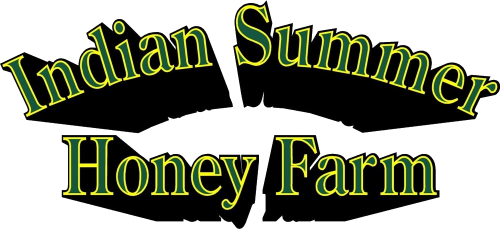Traveling back and forth every year from Wisconsin to Florida has its advantages and disadvantages. An advantage is that we have two homes and a disadvantage is… well… we have two homes. Every year we say goodbye to those we love in one state to say hello to those we love in the other. We hate to go but we love to leave.
Our migration to Florida begins when we complete our Wisconsin honey crop. Usually this occurs between October and November. Contrary to the belief of many, we do not train our bees to fly back and forth from Florida and Wisconsin. They must be shipped. We load up around six flatbed semi’s of bees and ship them to our Florida farm. This may seem like an easy task, but trust me, there is a lot more that goes into it! We first need to prepare our bees for the move, going to each of the 80-90 bee yard locations, removing the remaining honey supers and consolidating the hives to fewer pallets. Early in the morning, late in the evening, or on cold days, we go from bee yard to bee yard picking up the pallets of bees. This typically entails many late nights, early mornings, and several pounds of coffee. We then carefully load these pallets on the flatbed, covering them with netting and strapping them down tightly.
All while this is happening, a few of us are in Florida preparing to accept the bees. They are checking bee yards making sure they can get the bees where they need to be. Once the semi arrives, they will unload the bees. Then, spending many mornings and evenings, move the bees out to the various bee yards. This process occurs with each semi until all the bees are moved down south. This is a simplified version of the long story. Beside the bees, we also need to pack up our families, our animals, our home school, and various other equipment making the trek down. Sometimes we need to make a few trips to get our vehicles in the state they are needed. Because of the need to have workers in both states during the transition, we tend to all leave at different times of the season. We are ALWAYS all in Florida to celebrate the New Year together, high-tailing our freezing keisters down south before we get snowed-in for the winter.
Traveling back to Wisconsin in May is very similar to our traveling to Florida, only reversed. The bees are being shipped up north in time for apple pollination and preparing for their first crop of honey, dandelion and black locust. One of the biggest difficulties of this time of the year is making sure the ground is dry enough to drive our big truck loads while moving the bees to their yards. More than once, a kind farmer has rescued us using his tractor to pull our stuck truck out of the mud. Again, our family is split between the states doing various jobs during this transition. We are normally all together again by mid-June.
Our Wisconsin friends are jealous that we get to be in Florida during the winter months, and our Florida friends are jealous that we get to be in Wisconsin during the summer months. We are often called snowbirds. Or should we be called snowbees? Either way, there is always something to do. There are always bees to check. There is always family to visit. There is always a house to clean. Luckily for us, there is also always a laugh to share and coffee to drink!

Hello Chris Warner, Roger Kicklighter TipTop Honey Bees, Sandersville, GA. I enjoyed meeting you at Hive Alive 2023. And looking at dates for a visit to your operation, I believe you said the best time would be March or February. Hopefully mid to late February will work. I enjoyed your presentation and feel that I already know you because I learned your queen rearing process from Bob Bennie and have been using it for the past six years. I’m interested to learn more about the process and really want to understand you record keeping system and timing for each mating nuc yard.
One of the most interesting things I learned from you was that you feed propolus to your bees. Just wondering how you collect it and what you put with it to feed it ..
My Sixty colonies are starting to get going, I found my first drone brood last week and pushing drone comb on my strongest drone mother colonies. This cool winter weather has really slowed my colonies somewhat. My winter losses are very low this year because I requeened in last summer and early fall.
When do you start grafting? I’m interested in watching the technique your grafters use. I’m a fair grafter only slow.
Thanks for allowing me to visit, and if you need an extra hand working bees I’ll be glad to help out. I’ll call in a couple of weeks and check on dates that are good for y’all.
Sincerely,
Roger Kicklighter